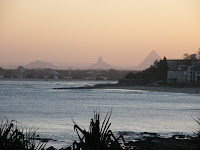

Spatial Worlds Website
Picture descriptions:
Left image: The map by Dr John Snow of cholera victims in London in 1855 .
Right image: Napoleons march on Moscow by Charles Minard in 1861.
Adelaide, Australia: S: 34º 55' E: 138º 36'
As geographers we have been using many of the GIS techniques/approaches since the beginning of the discipline of geography. Visual representations of place, space and events is nothing new and has been presented in map and chart form for centuries. What spatial technology has enabled is the ability of the geographer to crunch an enormous about of data, use overlay techniques and generally developed intricacies of digital presentations not imagined possible. That is not to say that the great cartographers and geographers of the past did not produce wonderful visualisations of data and space. When teaching students about thematic mapping and other forms of spatial visualisations it is worth showing and discussing the work of Charles Minard and the spatial mapping and analysis of Dr John Snow.
Dr John Snow is well known to many of us for his plotting of cholera cases in Soho, London in the 1840's and 1850’s. Snow developed spot maps from these outbreaks and using basic GIS applications of buffering and proximity determined that the cases were most likely associated with a particular water pump in Broadstreet (now Broadwick Street). The water pump was shut down and the cholera cases diminished. Up until that discovery cholera was thought to be transmitted by bad air or pollution. Despite the spatial analysis of Snow the skeptics re-opened the water pump after the cholera epidemic subsided. Such a simple technique of map making by hand had such power of analysis and implication for society. Imagine what Snow could have done with GIS overlays and hotspot/3D visualizations to prove his theory? Interestingly, a recent historical forensic study on the likely location of Jack the Ripper in London was undertaken by a so called geographical profiler. The profiler created simple GIS maps of attacks in London during the time of Jack the Ripper and made some basic conclusions using techniques of buffering and intersection of where the Ripper may have lived. Just imagine if we had a show on television about forensic geographical profiler involving sexy, charismatic characters like CSI? Spatial technology and geography classes would be overflowing! Maybe!
Issues of nothing new with GIS techniques came into even greater focus for me recently when I read an article about Charles Minard. Minard is best known for his amazing 1861 map of Napoleon’s March on Moscow. Many claim this is the best graphic ever produced! The map is a visualisation of troop numbers as Napoleon marched on and then withdrew from Moscow. The army was originally 422 000 in number and is represented by the width of a broad line overlaid on a map of Russia. As Napoleons army diminished to only 10 000 on his armies return to Paris, the line dwindles to being very thin. Running parallel to the troop line is a temperature graph which shows the relationship between diminishing troops and declining temperatures. The map was presented as a large format fold-out book of exquisite details and colour tones. Minard also did a similar graphics of Hannibal’s army in Italy, the movement of travelers on the principal railroads in Europe, international distribution of French wines, cotton and coal. He was indeed the pioneer of the thematic cartographer and associated statistical graphics. Many of Minard’s maps were used for planning in an era of rapid growth in Europe. For example, his map of population distribution in Paris was used to determine the location of a new central post office. Naturally such visualisations of data resulted in the sacrifice of actual locational scale. Minard “forced the scales of the geographic features on his map to fit the data being portrayed”. With the power of 21st Century GIS Minard could have overcome this conflict of priorities in his visual representations. As the article on Minard shows he also was the father of other data representations such as pie and rose diagrams. His pie diagrams were not only showing percentages of representation (type of meat for example) but also the volume of meat produced in each district as proportional pies.
Minards’ output of beautiful hand drawn and coloured maps was prodigious and included an enormous range of topics. Of special interest are his maps showing the impact of the American Civil War on French trade, patterns of European immigration around the world in the 1860’s and the movement of ancient languages throughout Europe.
Considering the elaborate and intricate maps of Minard, could you imagine his output from the click of a GIS mouse. His story is truly inspiring and relevant for the teacher of GIS in schools and the tale it tells is that many of the visualisations and techniques GIS operatives use today are not new. What is new is the capacity we have to go beyond the dreams of people such as Minard and Snow with the intricacy, commensurateness of scale and data, visual impact and the complexity of overlay of our maps.
Also of great interest is the map work and spatial analysis of Florence Nightingale. After witnessing terrible sanitary conditions in the Crimea, in 1858 she wrote "Notes on Matters Affecting the Health, Efficiency and Hospital Administration of the British Army." This document became annimportant text and included a range of maps based graphs she called "Coxcombs"(rose maps).
Such an historical approach to introducing and/or elaborating the applications of GIS in the classroom is well worth the consideration.
PS: Recently JohnSnow's cholera map of London has been recreated using GIS. What would John Snow's famous cholera map look like on a modern map of London, using modern mapping tools? With the help of mapping tool CartoDB and using the Stamen style maps, this is how it looks with larger circles representing more deaths.






















